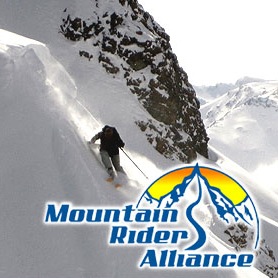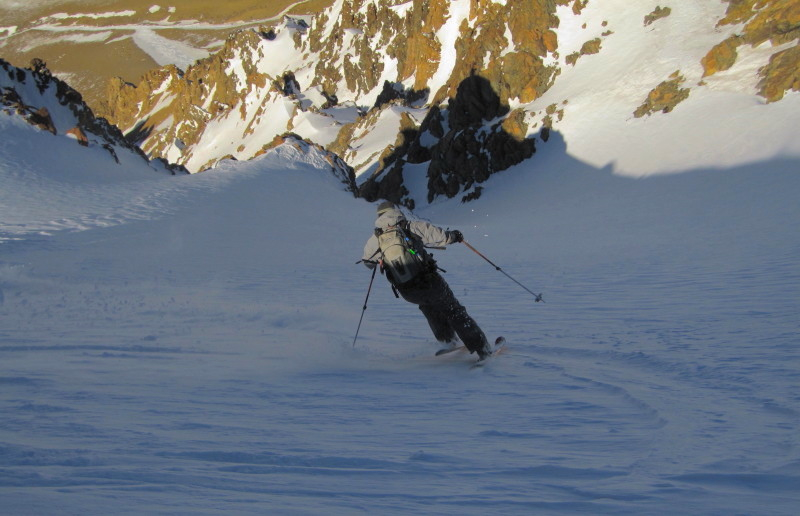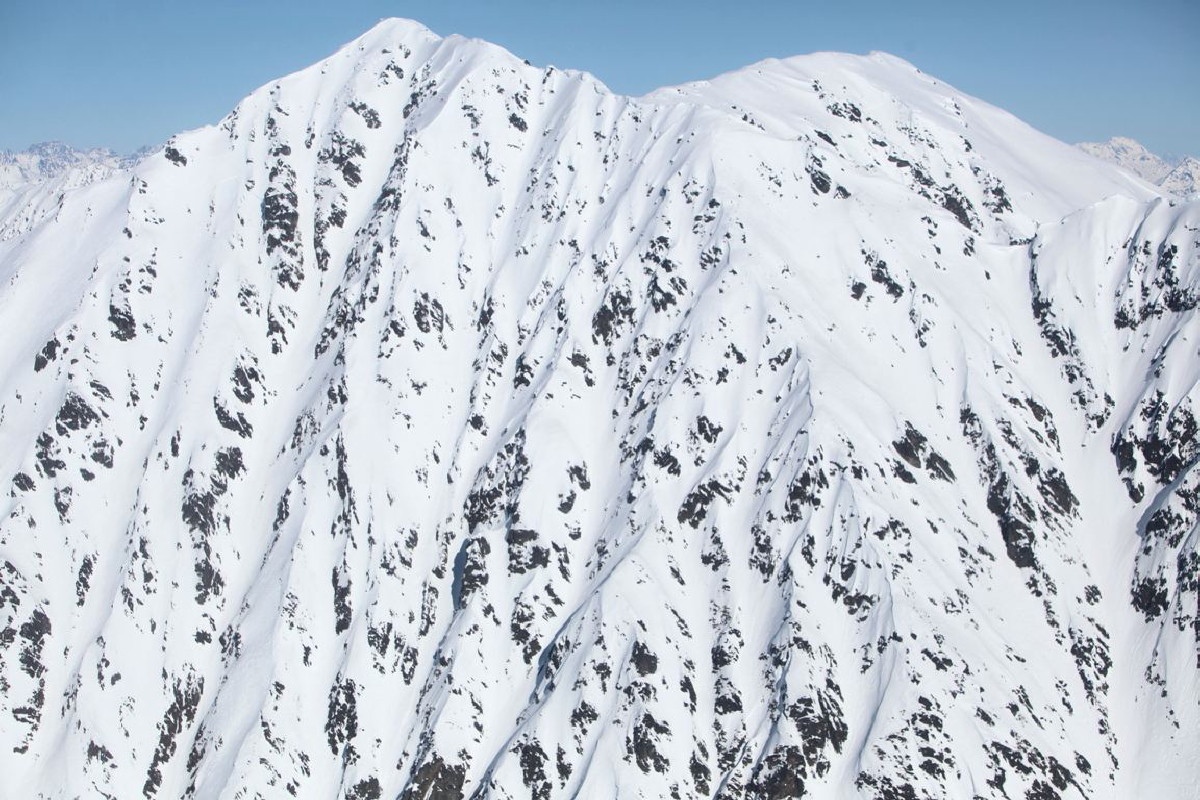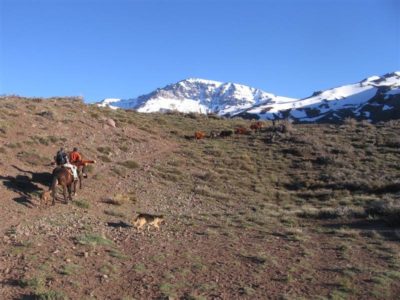 Jamie Schectman is more than an avid skier — skiing is a driving force in his life. As one of the founders of the Mountain Riders Alliance, his goal is to develop environmentally-friendly, rider-owned ski areas around the world. He dreams of resorts that produce more energy than they use by limiting resort infrastructure and using alternative energy sources like solar, wind, micro hydro, and geo-thermal to run operations. We spoke with Jamie about his passion for skiing and his vision for “values-based ski areas.”
Jamie Schectman is more than an avid skier — skiing is a driving force in his life. As one of the founders of the Mountain Riders Alliance, his goal is to develop environmentally-friendly, rider-owned ski areas around the world. He dreams of resorts that produce more energy than they use by limiting resort infrastructure and using alternative energy sources like solar, wind, micro hydro, and geo-thermal to run operations. We spoke with Jamie about his passion for skiing and his vision for “values-based ski areas.”
NYSkiBlog: Where were you born and when did you start skiing?
Jamie Schectman: I was born on Long Island, NY, but I moved to California when I was four. I went on a ski trip to Mammoth Mountain in junior high school and was instantly hooked.
NYSB: What did you do after you were “hooked?”
JS: During high school, I saw the movie Hot Dog and knew right then what I was going to do with my life. I moved to Squaw Valley after I graduated at the age of 18. I first started as a lift operator, but quickly realized watching other people skiing was not my calling and found a job making sandwiches. The kitchen was at the base of the mountain and the shift was 4pm – 11pm. I thought I was in heaven.
NYSB: What mountain had the greatest impact on you BEFORE the idea of MRA was born?
JS: I’d have to say Las Leñas, Argentina. My wife and I spent three seasons in the big Andes. We experienced some of the best skiing of our lives there. The terrain is amongst the best in the world, but the inept mountain operations and outdated lift system combined with huge winds can be extremely frustrating. Anyone that has skied Las Leñas knows exactly what I am talking about.

NYSB: Who are the founders of MRA? What is their vision for MRA?
JS: Dave Scanlan of Hope, Alaska and I are the founders of MRA. But there have been many who’ve contributed to the evolution of MRA. My wife Shanie, who has worked in the ski industry since age 12, has also been an instrumental part. We envision “values-based ski areas.”
NYSB: What does that mean? Describe the perfect MRA mountain.
JS: There would be a real ski village, one where everyone lives, works, shops and plays. It would create its own energy on-site and not be dependent on the grid, but instead serve as a provider of energy for the surrounding communities. It would be located in a reliable high-elevation snowbelt with a maritime snowpack, big vertical, and exciting terrain. It would have well-spaced trees at lower elevations for stormy days and big alpine terrain with sustained drops on a variety of aspects. It would be located close enough to a population base, and would act as a steward of the people that support it. Besides skiing, it would support art and music festivals, earth-friendly interactive education for kids, sustainable architecture, locally-grown restaurants, and a fun ski town vibe where everyone is stoked to be a part of it.
NYSB: Which ski mountains out there currently would most easily fit into the MRA model?
JS: Silverton, Colorado and Bridger Bowl, Montana are both examples of skier-centric, no-frills big mountain skiing. Though I haven’t been to Mad River Glen, their shareholder’s passion and dedication to their mountain is similar to what we hope to encapsulate.
We believe many ski areas could fit within the MRA model, as long as there is the opportunity to create renewable energy on site and offer something unique. Last week, Snow King, Wyoming came on the market. It has large community support, but is lacking the right model to purchase it. We have even begun conceptualizing an urban jib center within an economically distressed city such as Detroit.
NYSB: Which mountains would never work as MRA mountains? Why?
JS: Ski resorts with large footprints, that rely on thousands of skier visits, $15 cheeseburgers and theme park attractions to break even.
NYSB: What’s the most common criticism of the MRA concept?
JS: That clean energy creation isn’t worth the investment. But the reality is, not only can it eliminate the number two expense in the ski industry (and possibly provide an additional revenue stream in net-metering states); the amount of the whole project can be depreciated.
What many don’t realize is with the host of rebates, grants and favorable loans currently available, it’s possible to move towards net negative with no money out of pocket to the ski resort. In my opinion, every ski resort is perfectly situated to use solar, wind, micro hydro and/or geothermal to make energy. Those who aren’t taking advantage of this opportunity are missing the boat.
NYSB: What is the most legitimate criticism of your model?
JS: That the ski industry is a risky business — it most certainly is. But we believe, as we move into a prolonged period of uncertain financial times, there will always be a demand for skiing. We think that our ski-centric, minimalistic approach, combined with on-site energy creation and our membership model will thrive at the same time that mega resorts with large overheads and big real estate components will endure challenges. We’ve recruited several seasoned industry professionals to serve on our advisory board. Their wealth of knowledge has been and will continue to be invaluable as we develop our organization.
It’s also worth noting that MRA is going to be a more than just ski areas that create energy. Richard Branson is one of my heroes and he has successfully created more than 400 companies under the Virgin brand. We envision other entities such as ski insurance, various forms of consulting, a credit union, apparel line, discount card and other businesses being developed in under MRA in the future.
NYSB: Snowmaking and travel are two of the largest impacts that the skiing business has on the quality of the environment. Does having mountains at lower elevations with higher snowmaking requirements, but close to population centers make sense?
JS: I don’t think MRA would create a new mountain playground that relies on snowmaking and/or is at a low elevation. For example, our project in Alaska, Manitoba Mountain just had its lowest snowfall in 40 years; however, it was still skiable to the base from November to the end of May.
MRA would consider an existing ski area with snowmaking, as long as there was on-site clean energy potential. Also, the latest Low-E snowmaking guns use as little as 25% of the energy consumption as older snowmaking systems. Our friends at Mount Abram tell us the new guns make better snow as well.
NYSB: Is it possible to create a sustainable ski industry?
JS: I’m don’t think so. Many resorts have already been built out and are past the point of no return.
NYSB: What’s the most common misconception about MRA?
JS: That we are a non-profit. We are a registered LLC and intend to make a profit, but will do so in a values-based, socially-and-environmentally-respectful manner. We do partner with many non-profits though.

NYSB: What other projects are you currently working on?
JS: Our project in Alaska, Manitoba Mountain, is an exciting one, because it will access amazing terrain. You can check out all the information at the website, SkiManitobaMountain.com. From the top of surface lift #3, there will be access to terrain that normally requires a helicopter or big hike.
On the riding side of things, we forged a partnership with an innovative green ski company. They will be creating a handmade, all wood, MRA limited-edition ski. A percentage of the proceeds will be going to one of our non-profit partners. More details will be forthcoming.
We’ve also identified a piece of private land along the Continental Divide that is for sale. If created, it would offer the best lift-served skiing in the lower 48. We have begun facilitating a cultural exchange program with some amigos in Argentina as well.
NYSB: What’s your favorite Eastern Mountain? Western Mtn? Anywhere in the world?
JS: I would have to say that Mount Abram, located outside of Bethel, Maine, is my favorite eastern mountain. They have that great ski vibe, an ice cave and their own Abram Ale. Out west, I like the Squaw Valley of 20 years ago, when life was simpler. If I could fast forward five years, I’d say Manitoba Mountain, Alaska. Verbier is my favorite lift-served big mountain skiing on the planet. With the right lift upgrades and mountain operations team, Las Leñas would be a very close second.
NYSB: What’s been your most memorable experience on skis?
JS: It’s hard to choose. In 1999 I worked in a heli-ski operation in Alaska where we pioneered some first descents. I was the first to ski Sphinx, one of the great ski faces on the planet with 1,600 vert at 57 degrees.

But I’d have to say La Horqueta, above Los Molles, Argentina, sticks out in my mind. With a long approach and 6,000 vertical feet to the top of the chute, my wife Shanie and I, led by an authentic gaucho, traveled on horseback to snowline. Then we hiked for six hours to an objective that had been staring us in the face for three seasons. When we exited the chute and got on the apron, two full-size condors circled us for the rest of the descent. It was magical.
NYSB: If you could only ski one mountain for the rest of your days what would it be?
JS: The Arlberg region of Austria, that’s where it all began. The culture, bratwurst, and Weissbier, combined with the terrain and reliable snowfall, would be a place to grow old.

What’s with the riding terminology to describe skiing?
Has this guy ever had a job?
If I ever hit the lottery I’d love to help him with that piece of land on the continental divide.
Jamie – you and Shanie are an inspiration! This interview is amazing and knowing you I know its no BS! You’re both truly concerned with the environment and ways of betting the world not just eating it up one gallon of gas at a time. Since this article is based on skiing, no one knows the other amazing accomplishments you two made while living in Argentina and all the people that you helped. To the man that asks if you’ve ever had a job? HA! He has no idea what risks you’ve taken and jobs you’ve not only done but CREATED in the world. I bet he thinks you come from money. Much love to you brother! Keep the faith!
A pipe dream. Keep smoking bro!! Unicorn Farts!
I don’t get it. If you are so concerned about the environment, why not just ski the backcountry? Is this guy making money off this somehow?
As a contributor of many hard hours with no monetary return yet…careful to not be confused with profit. It is not bs it is legit, very…if you are tired of spending more and more for your release in life then become a part …check out the website…www.mountainridersalliance.com Its pretty common these days to refer to glisse over snow as “riding”…
No it’s not. Riding is used to reference boarding, skiing for …. skiing. Most of us who aren’t lucky enough to have a trust fund have to work for a living. We weren’t all born yesterday here.
Now, are you from this “alliance?” Do you work for it? Are you Jamie? It would help to know if we want to carry on an adult conversation.
Benny’s on the warpath. Jamie, are you saying that an East Coast ski area (low elevation by definition) couldn’t work as a MRA mountain?
Benny, I think leveraging capitalism to promote corporate responsibility is admirable. Also, there is both a demand for skiing and green options. By supplying said demand you have a better chance of making an impact than hoping people will be responsible, assume perceived risk increases and ski backcountry. My name is Adam Hicks, I live in Colorado.
“Leveraging capitalism to promote corporate responsibility.” What does that mean?
Listen, like I said, if you want to be green, skin. Otherwise, don’t force your values on the world. If everyone wanted Silverton (which is a wonderful experience), then everyone would go there. They don’t. Hardly anybody goes there. Because most people want quads and groomers. Not one chair at 11000 ft and hiking and skinning afterwards.
Great interview. Benny: Riding / Glisse is used to include skiing and snowboarding. MRA isn’t the only org using the word in the same context.
Jamie is only one of many looking for alternative to today’s ski industry. From Mad River to La Grave, from Manitoba to the Kiwi Club Fields…all about ski centric places.
JD: I am saying MRA wouldn’t create a new ski area at a lower elevation that relied on snowmaking. We would evaluate converting an existing one, as long as the onsite energy potential exceeded the annual energy consumption.
Let’s not suck Mad River into this argument and exploit it. It is what it is because it’s a co-op that by it’s nature makes it almost impossible to modernize, which is good. It’s also situated down the road from Sugarbush, so the Mad River skier has an alternative when it doesn’t snow – you know, a big evil corporate mountain with snowmaking and quads. And really good trees.
I think it’s interesting that the “greenest” ski area in the East may be Jiminy Peak, where their wind turbine generates a significant offset to the ski area’s energy consumption. How much, I don’t know, would be interesting to find out. And windmills aren’t exactly without controversy – witness the prolonged debate that arose around the proposed (and currently dead) wind farm in North Creek. It’s also interesting that Jiminy is probably the antithesis of what MRA envisions – you don’t usually hear Jiminy referred to as a skier’s mountain." Sorry, rider’s mountain.
🙂
IMO, MRA isn’t forcing their values on the world any more than any other startup company. They’ve got an idea and they are pursuing it. That’s capitalism right? The concept may not appeal to the masses, but it sounds like a modest number of skier visits is part of the plan. Jiminy’s energy production claims are impressive if legit.
Skinning is great but its far more difficult to teach kids how to ski downhill when there isn’t any type of lift. Ski areas are great for backcountry access too. And an argument against them of “why dont you just skin” is unfair. If you are that much of a purist don’t use roads to get to the mountains.
How much for on mountain real estate when you start selling that?
Wait, it’s values based mountain real estate. Cut the dood sum slack!
I can see Russia from my values based mountain real estate.
“Also, there is both a demand for skiing and green options.”
Where is this demand?
Benny – the only person arguing is you …and no one really cares because you obviously have a chip on your shoulder about something…maybe you have an office job and get to ride once a month, whatever. If you have some counter-points that’s great but simply venting your spleen and pretending you know something is of little value. If this type of thing doesn’t appeal to you that’s fine..more for the rest of us, you know how it goes. See ya sucker.
😉
Gee, Jamie’s friends are so lazy, they can’t find the time to whip up an avatar. Anonymous trustafarians united behind a cause?
Damn, Jamie really pissed of his pizza delivery guy!!
Benny, Any time I see you post, whether it be here or TGR, you’re always bitching. A thread about when “riding” became acceptable for skiing? Really? As SBR(?) said, “Lighten up, Francis.” Go skiing.
Was it the ladies room comment that provoked the stalking? Sorry, Harv, I have enemies.
To make things clear. I’ve never met Jamie and he’s not the one that is bringing the MRG comparison, I am. Low impact skiing, focusing on skiing, not the frills. I named MRG, because it probably the best known in the East.
Not sure who mentioned it…eastern areas without snowmaking and low key impact. Mont Miller in the Gaspe Peninsula is one of them. There is also a number of wind turbine along the top of the ridge, however I don’t think they are associated in anyway to the ski area. It’s in Murdochville and the town almost shutdown when the mines closed. Look it up.
Why do detractors get so angry that Jamie is even attempting this project? If he’s wrong or unrealistic about a MRA ski area’s chances of survival, it’s not like he’s taking money out of their pockets.
If you listen to the video or read the above, he has his eyes on tax breaks and grants to build his ski area. That’s using other people’s money. Yours and mine. What bothers me is that he is presenting his business model as some sort of advocacy group. It’s one or the other. Profit or non profit. Besides, we just saw all this crash on a larger scale. Can you say Solyndra?
Kinda ironic Jamie’s most memorable ski day was heli-assisted. Way to keep it green.
Do you have a job, sir?
You really struck a nerve with this one! Makes for interesting reading.
The courage and integrity of the anonymous commenters is inspiring. At least Benny’s got a persona that he sticks with, across various social media and forums. Seems to me that whether the MRA model is for profit or not, it’s just an idea, why are people scared of it? It’s a sincere question. Also to criticize somebody for heli-skiing seems a little off. Let’s face it, as skiers we’re all burning the planet.
Well put Harv, did I note a hint of sarcasm in the first line?
😉
The courage and integrity of the anonymous commenters is inspiring. That comment seems a little off, coming as it does from someone who uses an internet alias himself. Let’s face it, we’re all anonymous on the internet unless you use or disclose your real name.
@Anon – as you well know, I don’t have a problem with people choosing to be anonymous. You get significantly more conversation when people can protect their anonymity. Your decision in this instance to comment anonymously makes that point. I will make this retraction – rereading through the above the anonymous comments, most actually did contribute something to the discussion. My point about Benny Profane above was not that I know who he is, I don’t. But he’s consistently Benny, he makes his positions known, and stands behind them.